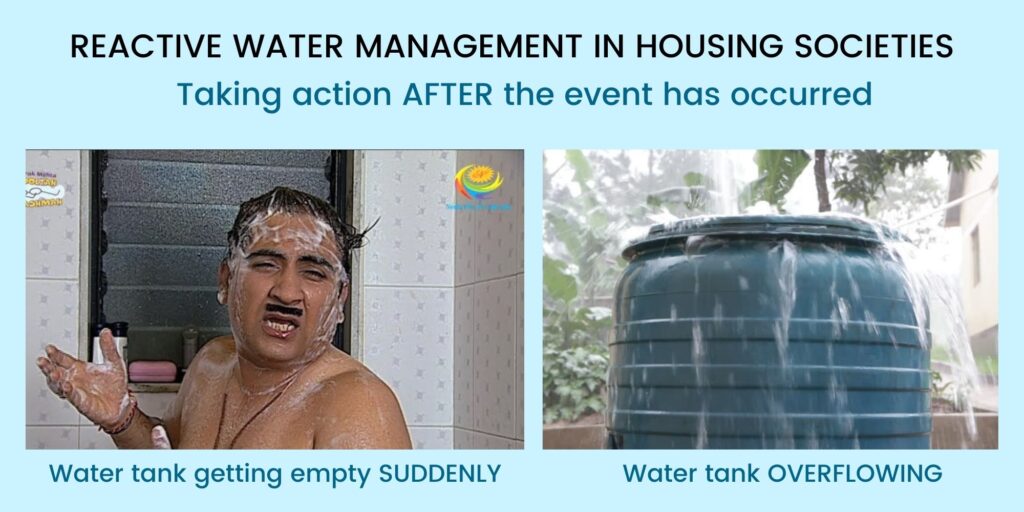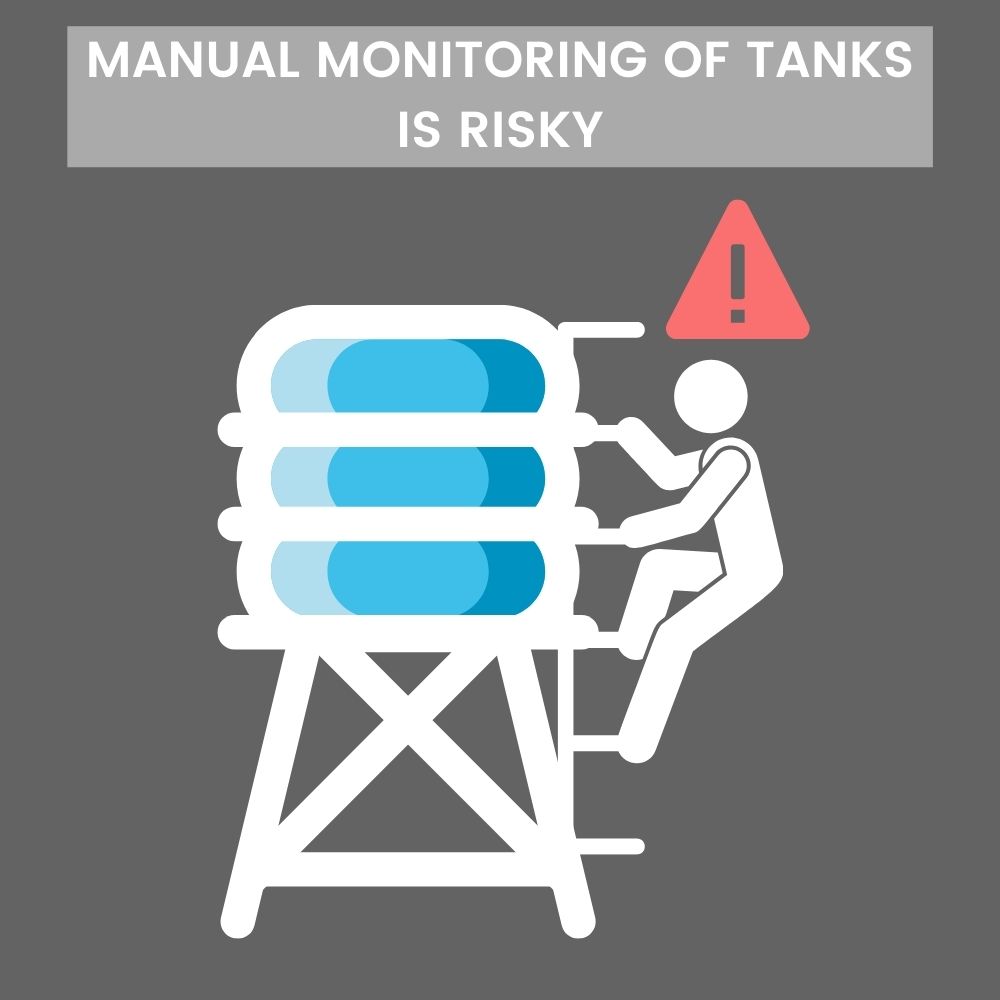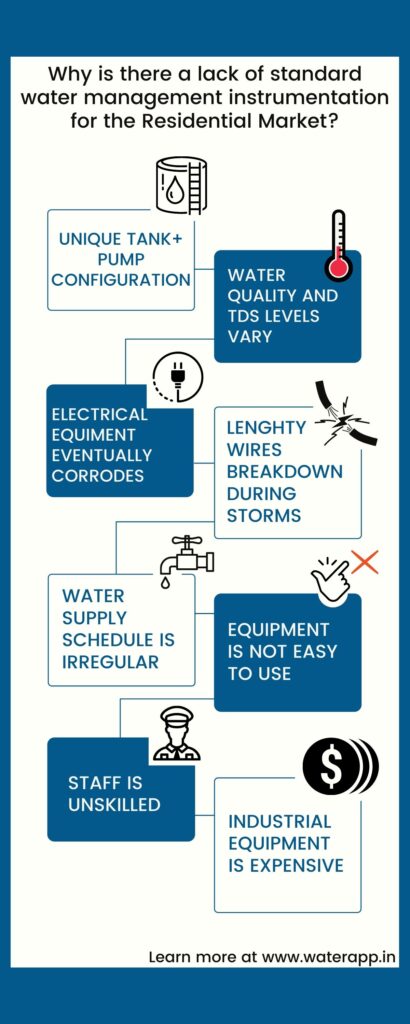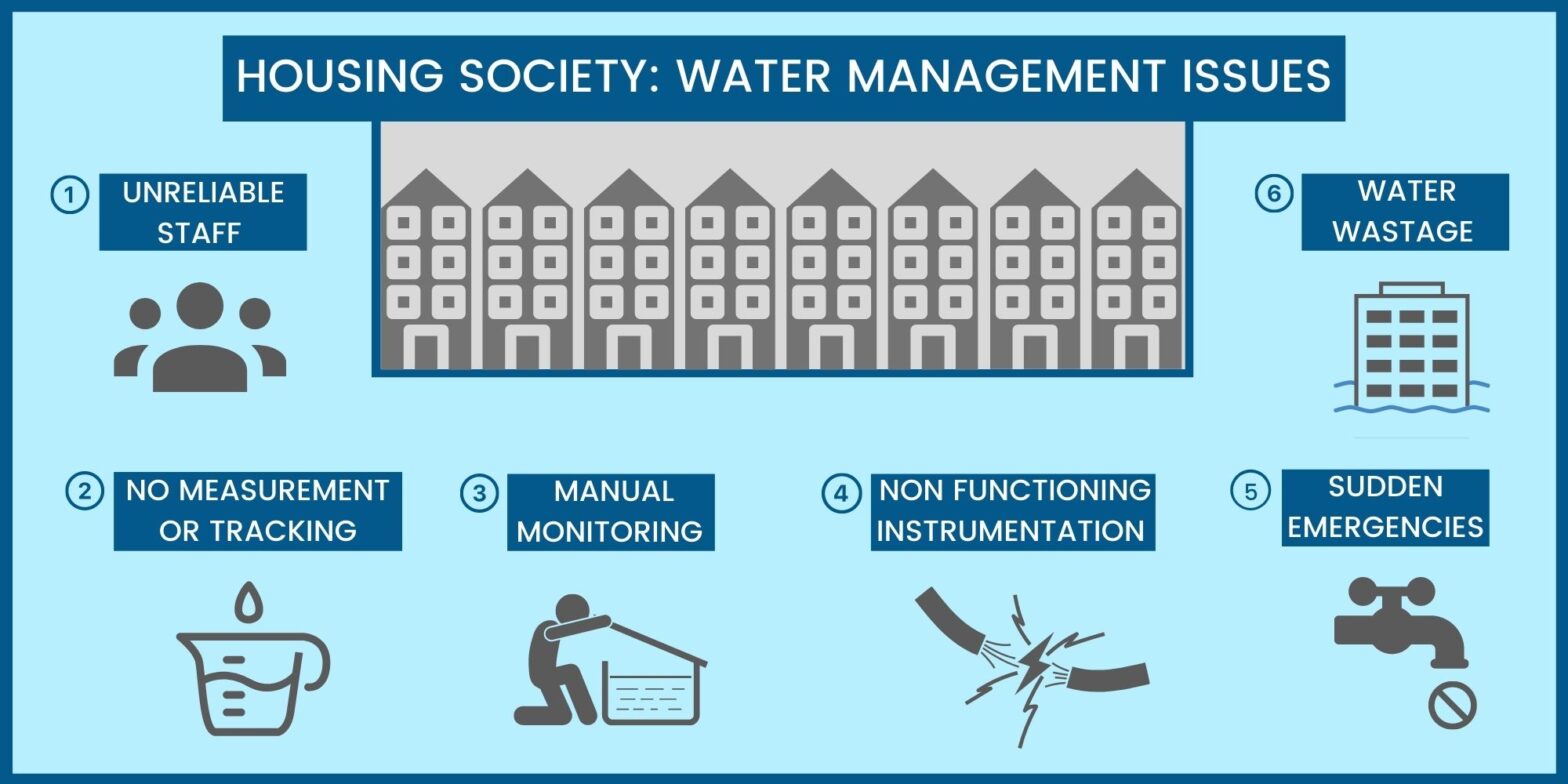Water Management in Housing Societies: Room for Improvement
Did you know that India has about 18% of the world’s population today and only 4% of the world’s water resources?
Table of Contents
ToggleThe residential sector is a major consumer of that water. Residential water management has not seen any innovation since the eighties and happens mainly in the reactive mode. Here, in this blog we take a deep dive into understanding the challenges of water management of the residential sector.

The main drawbacks of the current water management system
-
Reactive Water Management
-
Lack of suitable, affordable instrumentation
-
Dependence on physical monitoring
-
Lack of water related data and statistics
Let’s examine each of these in detail
1. What is Reactive Water Management in Housing Societies?
Typically, we see that water management happens AFTER the occurrence of the event. In simple terms, we see that typically in housing societies, the pump gets shut off AFTER water starts overflowing. Or the pump gets started after residents have run out of water and someone starts yelling from the bathroom or from the Society WhatsApp group.

Another example of reactive water management is having to call water tanker services AFTER you realize that you have run out of water. This comes with a double disadvantage – not only do you have to pay a higher water tanker price but it’s also possible that you would have to wait longer, especially if it’s in the peak of summer.
2. Water management via physical monitoring by staff
Many times, a cooperative housing society appoints a local staff person such as the gardener or security guard to take care of water supply and management. The typical scenario is that this person switches the pump on and then proceeds to do other chores.
In the meanwhile, the tank fills and overflows after which the operator switches the pump off. Sometimes, if this person is in another area of the housing complex, the water may overflow for a while before anyone notices.
A 10 min overflow can cause a wastage of 1500 liters – enough to wash 50 cars.
Considering how precarious the global and national water situation is, wasting water is a crime, especially when it can be easily avoided. And over the long term, tank overflows cause more damage that what is apparent
Damage caused by Tank Overflows
-
Water wastage
-
Ceiling leakage
-
Weakening of construction

An exactly opposite scenario takes place when the tank is empty. A resident may be in the bathroom or washing hands and the tap suddenly goes dry on them. This results in chaos, yelling and shouting until someone starts the pump from downstairs.
It is a tedious and time-consuming chore to stand next to the tank, waiting for it to fill up.
Climbing ladders on terraces is Risky!
In addition, physical monitoring of tanks comes with a certain risk to the safety of the security guard. The Overhead tanks are located at a certain height above the terrace.
Many times, the security guard has to climb atop a tentative ladder on the terrace so that he can open the lid of the tank and check the level of water inside. Sometimes, this needs to be done twice/ thrice a day.

Water consumption rate not in the picture
The traditional method of starting and stopping the pump at regular intervals as per a predetermined schedule overlooks a very subtle but important aspect of water management. It does not consider the water consumption rate of the residents.
If a particular tower is not fully occupied or not consuming water at a high rate, there may be no need to pump water twice in the day. Or it may be that another tower has a greater number of people residing in it and may need water to be pumped thrice in the day. These aspects are completely overlooked when water management happens in a reactive mode.
3. Lack of suitable instrumentation
Until now, water management instrumentation has been expensive and unreliable. Structured water management has been restricted mainly to the industrial sector and has not entered the residential sector in a standardized way.
Residential water management equipment is limited to installing metallic water level sensor, float valves, tank overflow alarms and automatic water level controllers for tanks and pumps which is based on outdated technology. There has not been much innovation in these and there are many reasons for the lack of suitable instrumentation in the residential sector. Here we list some of them:
Reasons for lack of suitable, standard water management instrumentation
- Many unknowns in tank construction and pumping configuration
- Each builder and building has its own architecture and water supply schedule
- Waterproofing is a complex task and water eventually breaks down the best of materials
- Water quality and TDS levels vary from site to site
- Electrical connections are highly susceptible to corrosion when they come in contact with water
- Water level sensors that are used in tank overflow alarms and automatic water level controllers involve running lengthy wires along the height of the buildings.
- These carry the risk of getting cut or breaking down during storms and strong winds.
- Float switches and float valves break down after a while due to excessive water pressure coming from the inlet

4. Zero data available
We have seen that very few housing communities have water meters installed to measure their water availability and water consumption. And even fewer societies have water and flow meters that are actually working. Pune municipal corporation is making an effort to install water meters in every colony but they have not activated them yet, probably due to political reasons.
Given the haphazard water supply schedule on the supply side and unstructured water management on the demand side, the whole society just relies on guesswork or judgement of an old timer fellow who has been managing the water for a long time.
The traditional system of water management comes with many disadvantages:
- The housing society is dependent on a specific staff member and if he goes out of station, water management gets problematic
- If there is no automation installed, the society runs the risks of having tank overflows and dry taps regularly
- There is no visibility into the total volume of water available for consumption at any point
- Especially in summers, when water is supplied on alternate days or even less frequently, there is no easy way to gauge when water was received and whether the society needs to call in water tanker services
- There is no data on trends of water received and consumed per tower, per season or in any other way.
The lack of data especially can result in inefficiencies in the system. For e.g Society may be using way too much water in the garden without knowing it.
Once you are able to see the volume of water going into the garden, you can adopt techniques to reduce and then measure the water saved. Similarly, many such efficiencies can be built into water management once you can actually “see” how much water is being used where.
In our next blog, we will cover how Water App technology can assist in the above scenarios and help societies to go from reactive water management to proactive management.

